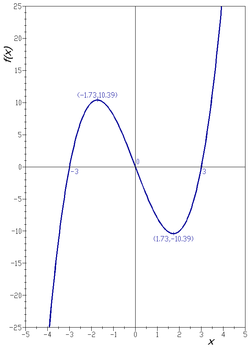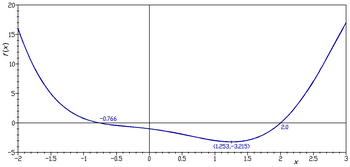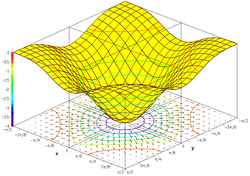Which Would Most Likely Be Graphed Using A Continuous Graph? Check All That Apply.

Graph of the function
In mathematics, the graph of a function is the ready of ordered pairs , where In the common case where and are existent numbers, these pairs are Cartesian coordinates of points in ii-dimensional space and thus grade a subset of this airplane.
In the case of functions of two variables, that is functions whose domain consists of pairs the graph unremarkably refers to the set of ordered triples where instead of the pairs as in the definition higher up. This set is a subset of iii-dimensional space; for a continuous real-valued function of two real variables, it is a surface.
A graph of a part is a special case of a relation.
In science, technology, technology, finance, and other areas, graphs are tools used for many purposes. In the simplest case one variable is plotted as a function of some other, typically using rectangular axes; meet Plot (graphics) for details.
In the modern foundations of mathematics, and, typically, in set theory, a function is actually equal to its graph.[1] However, information technology is often useful to see functions as mappings,[2] which consist not only of the relation betwixt input and output, simply also which set is the domain, and which set up is the codomain. For example, to say that a function is onto (surjective) or not the codomain should exist taken into business relationship. The graph of a role on its ain doesn't determine the codomain. It is common[3] to use both terms office and graph of a function since even if considered the same object, they indicate viewing information technology from a unlike perspective.

Graph of the function over the interval [−two,+3]. Besides shown are the ii existent roots and the local minimum that are in the interval.
Definition [edit]
Given a mapping in other words a function together with its domain and codomain the graph of the mapping is[4] the ready
which is a subset of . In the abstract definition of a function, is actually equal to
Ane can discover that, if, then the graph is a subset of (strictly speaking it is but one tin can embed it with the natural isomorphism).
Examples [edit]
Functions of one variable [edit]

Graph of the part
The graph of the office defined by
is the subset of the gear up
From the graph, the domain is recovered equally the set of start component of each pair in the graph . Similarly, the range tin can be recovered as . The codomain , even so, cannot be determined from the graph lonely.
The graph of the cubic polynomial on the real line
is
If this gear up is plotted on a Cartesian plane, the result is a curve (see effigy).
Functions of two variables [edit]

Plot of the graph of also showing its gradient projected on the bottom airplane.
The graph of the trigonometric part
is
If this set is plotted on a three dimensional Cartesian coordinate system, the result is a surface (see effigy).
Oftentimes information technology is helpful to show with the graph, the gradient of the role and several level curves. The level curves tin exist mapped on the function surface or can exist projected on the bottom airplane. The 2d effigy shows such a drawing of the graph of the part:
See also [edit]
- Asymptote
- Chart
- Concave office
- Convex function
- Contour plot
- Critical betoken
- Derivative
- Epigraph
- Normal to a graph
- Slope
- Stationary bespeak
- Tetraview
- Vertical translation
- y-intercept
References [edit]
- ^ Charles C Pinter (2014) [1971]. A Volume of Set Theory. Dover Publications. p. 49. ISBN978-0-486-79549-2.
- ^ T. Grand. Apostol (1981). Mathematical Analysis. Addison-Wesley. p. 35.
- ^ P. R. Halmos (1982). A Hilbert Space Problem Book . Springer-Verlag. p. 31. ISBN0-387-90685-1.
- ^ D. S. Bridges (1991). Foundations of Real and Abstract Analysis. Springer. p. 285. ISBN0-387-98239-6.
- Zălinescu, Constantin (thirty July 2002). Convex Analysis in General Vector Spaces . River Edge, N.J. London: World Scientific Publishing. ISBN978-981-4488-15-0. MR 1921556. OCLC 285163112 – via Internet Annal.
External links [edit]
- Weisstein, Eric W. "Office Graph." From MathWorld—A Wolfram Web Resource.
Which Would Most Likely Be Graphed Using A Continuous Graph? Check All That Apply.,
Source: https://en.wikipedia.org/wiki/Graph_of_a_function
Posted by: morenoknestagave36.blogspot.com






































0 Response to "Which Would Most Likely Be Graphed Using A Continuous Graph? Check All That Apply."
Post a Comment